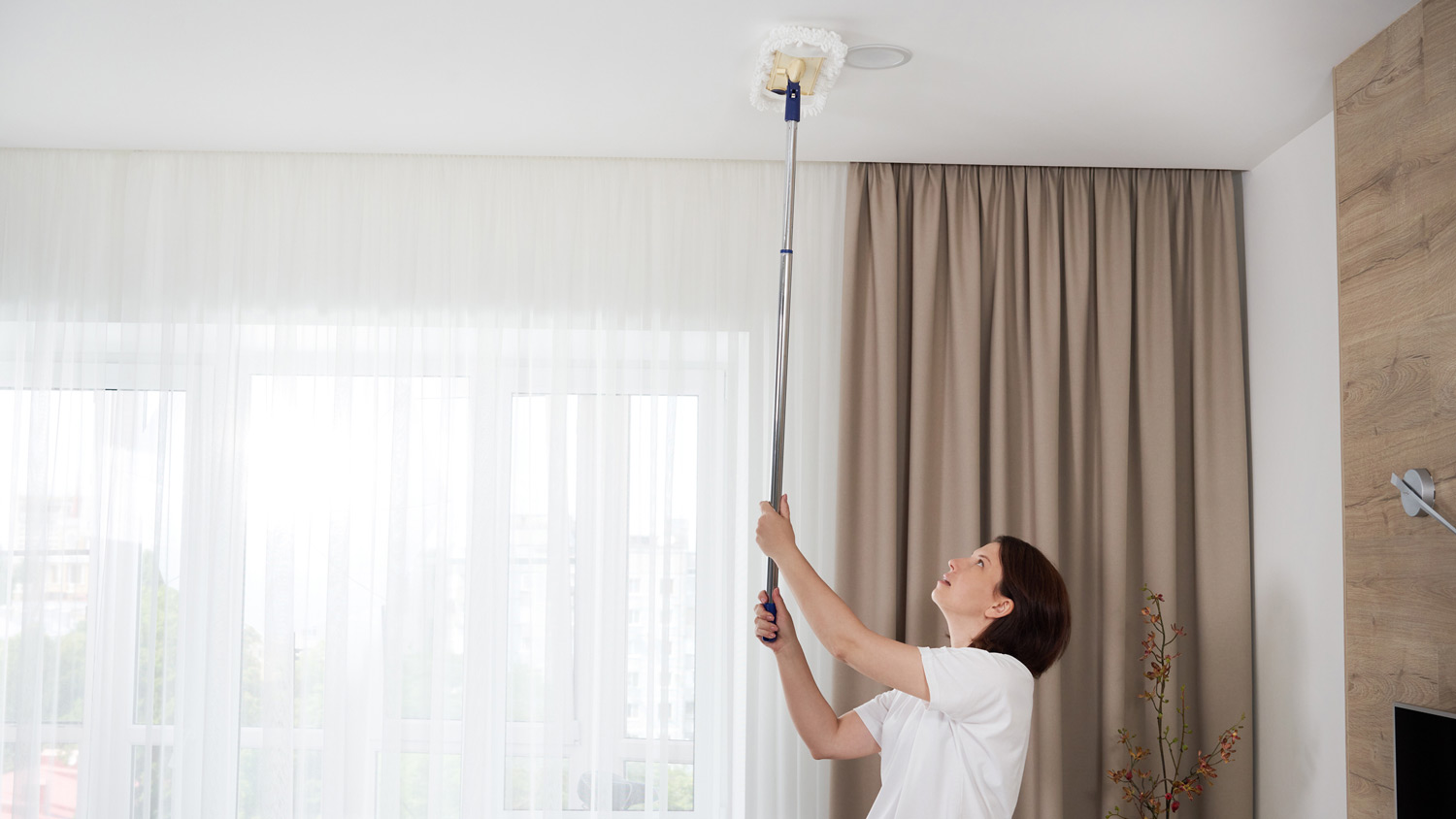
Discover the average acoustic ceiling cleaning cost, what affects pricing, and how to save. Get expert tips to budget for your acoustic ceiling cleaning project.
Get ready to steam away grime and germs


Steam cleaners use only heat and water to clean and sanitize surfaces like carpets and sealed floors.
Professional steam cleaning machines use water and a cleaning agent to achieve a deeper clean.
Steam cleaners can clean floors, tile, and upholstery, but some materials—like unsealed hardwood—should not be steam cleaned.
Some surfaces should be scrubbed with a cleaning solution before steaming.
Steam cleaning is more than its name implies. It is a powerful sanitizing and cleansing process for deep cleaning a broad range of surfaces. Here, we cut through the grime to answer these questions: what is steam cleaning, what are its benefits, and how does it compare to other cleaning methods?

There are two ways to steam clean: using only water or a mix of water and a cleaning agent. The latter option helps remove foul odors, stubborn dirt, and embedded stains. Steam cleaning can be used to clean carpet, sealed floors, upholstered furniture, and grout.
It's important to note that steam cleaners aren't suitable for all surfaces. Over time, their heat can damage wood and linoleum flooring, not to mention delicate upholstery fabrics such as silk, leather, suede, and velvet.

Steam cleaning machines heat distilled water—which will not clog the machine with mineral deposits over time—to generate steam. The steam is then pressurized and released through a nozzle, mop, or brush attachment, allowing for easy application to various surfaces.
The steam breaks down dirt and grime by loosening their bonds with the surface, allowing you to wipe it away. Machines reaching 300°F temperatures also sanitize by killing most bacteria, viruses, and dust mites.
Carpet and upholstery cleaning machines use suction to remove dirt and moisture into a collection tank while steaming. When it’s time to empty the tank, many homeowners find it satisfying to see all the dirt that’s been removed.
| Advantages of Steam Cleaning | Disadvantages of Steam Cleaning |
|---|---|
| Chemical-free cleaning solution | Doesn’t substitute traditional cleaning agents |
| Environmentally friendly | Needs additional tools for stain removal |
| Eliminates allergens, mold, and dust | Need commercial-grade products for deep cleaning |
| Works well on carpet and sealed floors | Damages surfaces like wood and linoleum flooring |
Pure steam cleaners offer a chemical-free alternative for killing bacteria.
They’re eco-friendly and safer for homes with children, pets, or adults sensitive to chemicals found in traditional cleaning agents.
Professional steam cleaning machines that generate higher temperatures effectively eliminate allergens, mold, and dust mites.
This method improves indoor air quality—ideal for those with allergies or respiratory issues.
Not always a substitute for traditional cleaning agents.
On particularly stubborn stains or heavily soiled surfaces, steaming works best as a follow-up after using the appropriate surface cleaner with a cleaning tool, like a brush.
For hard surfaces, like tile or stone, a combination of sudsy scrubbing and pure steam cleaning ensures a more thorough clean.
Consumer machines don’t always have the powerful suction to remove excessive moisture while steaming, leading to damage or mold growth.
As handy as steam cleaners are, you can’t use them on all materials.
What’s more, professional-grade steam cleaners are often needed to achieve the high temperatures necessary for proper disinfection.
When in doubt, working with a local house cleaning service is always best to protect your investment in your home and furnishings.
Avoid steam cleaning anything sensitive to heat or moisture. The list includes unsealed hardwood floors, vinyl flooring, porous materials like marble or limestone, and delicate fabrics.
It's also not recommended for painted areas, electronics, or anything with an adhesive attachment because the steam will weaken the bond. It's a good rule of thumb to check manufacturer guidelines before steam cleaning any surface.
From average costs to expert advice, get all the answers you need to get your job done.

Discover the average acoustic ceiling cleaning cost, what affects pricing, and how to save. Get expert tips to budget for your acoustic ceiling cleaning project.

Apartment cleaning costs vary considerably depending on the cleaning frequency, the apartment's size, and its inhabitants' cleanliness.

Cleanout cost may be one of your first thoughts when left in charge of an estate. We walk through factors to expect, the professional estate cleanout services cost, and ways to save.

Everyone wants their bathroom to be sparkling clean and to look brand new, but properly cleaning your shower tile and grout can be tough. That’s why following these tips from the pros is essential to ensure that your bathroom looks impeccable 24/7.

Tired of finding hard water stains around your home? Learn how to remove hard water stains from toilets, shower doors, counters, and more.

Learn how to make your home safe for little ones with this comprehensive childproofing checklist.